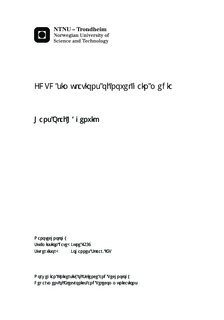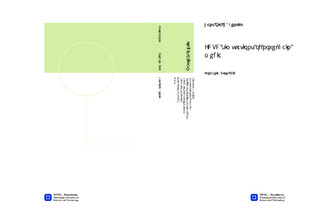| dc.description.abstract | Fourier-Laplace analysis of gain media predicts the existence of novel types of media. In particular it predicts the existence of media refracting positively and negatively at the same time, so-called simultaneous refraction. The effect is analytically derived through deformation of the inverse Fourier-Laplace integration surface. The requirements, and possible problems, of such media are discussed. It is argued that this is a 2-dimensional effect, meaning side waves must be present for the effect to occur. For a medium to be simultaneous refracting it must have gain, and it is discussed how this gain can be minimized. A Finite Difference Time Domain (FDTD) method for dispersive Lorentz media was implemented in MATLAB. The program solves Maxwells equations numerically in the time domain, where the real physics happens. If the Fourier-Laplace theory predicts novel optical properties for a given $\epsmu$, the program can thus be used to simulate the actual response from a medium with permittivity and permeability $\epsilon(\omega)$ and $\mu(\omega)$. It can therefore be used to independently verify (or disprove) the results obtained using Fourier-Laplace theory. The FDTD-program was used to simulate various types of novel media. Simulation results showing the occurrence evanescent gain are presented. For media with large gain the program fails, due to artificial reflections caused by numerical errors are being amplified. The reflections were found to originate from the numerical precision of MATLAB, and it is therefore not much that can be done to prevent them from occurring. Infinite or semi-infinite gain media may involve instabilities, as the signal may propagate infinitely long. There are two types of instabilities, convective and absolute. A \emph{convective instability} is convected away. An \emph{absolute instability} grows with time, even at a fixed point in space. The deformation theory is used to explain the occurrence of such instabilities. Wave propagation in passive media are usually considered in the so called monochromatic and plane wave limits, meaning only a single frequency $\omegaobs$ and plane wave component $K_x$ is present. Physically these limits can never fully be reached. The monochromatic limit is approached by turning on a single frequency oscillation at $t=0$, and waiting a sufficiently long time $t\to\infty$. The plane wave limit is approximated by letting the source width $\sigma$ being infinitely large, $\sigma\to\infty$. The Fourier-Laplace theory is used to show that these limits do not necessarily exist in gain media, as instabilities may lead to diverging fields. Even for media where the monochromatic limit exists, it may for certain gain media take a very long time for the transients to die out. This fact is also seen in the simulations. | nb_NO |

